Low cut, ankle-high or ten-to-18-inch boots? Before you invest in some expensive footwear, give some thought to gaiters.
by Leon Pantenburg
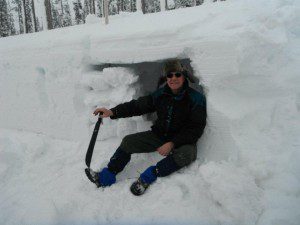
These knee-high gaiters allowed me to wear ankle-high Sorels comfortably in deep snow.
Buying boots is always challenging – you want the right combination of ankle support, light weight and protection.
But think about gaiters, too.
Gaiters are nothing more than a lower leg coverings that extend from the ankle upward to somewhere below the knee. The idea is to have added protection for the legs, and to keep mud, small rocks, sand and other trail debris out of your shoes.
The right gaiters allow you a lot of options for shoes.
Such as:
- Gaiters let you wear lightweight, low-top shoes on a desert hike, or dusty, rocky trial without getting your shoes full of dirt, sand and other junk that gets kicked up.
- In deep snow, knee-high gaiters keep snow and slush from getting into your boots and socks.
- Leave the heavy, high top snow boots at home, and wear the ankle-high ones with knee-high gaiters.
- Snake country? Feel less edgy walking in the deep woods with some snake-proof gaiters.
I own several different pairs, and the activity determines which ones go along. Start by looking at the height.
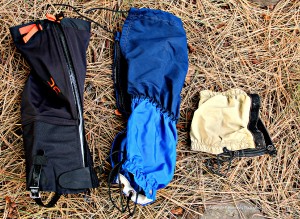
These three different style of gaiters are all useful in various situations.
Trail gaiters are lightweight and breathable. These are fair-weather apparel that give basic protection against stuff on the trail and light rain. They can range from six-inches high to about 10 inches.
Alpine gaiters are for all-around hiking, snowshoeing, mountaineering and cross-country skiing. They offer added protection against rock abrasion and water. Mine are knee high, and that is about right.
Expedition gaiters, according to REI, provide heavy-duty protection and add insulation for extended mountaineering trips in harsh conditions. Most feature a waterproof, breathable fabric for superior comfort and protection. I don’t have any of these, and they tend to be a more specialized, extreme sports style.
Women’s gaiters: Women’s styles are typically shorter in height and have a bit more top girth, according to REI, to specifically accommodate a woman’s calf. My wife and daughter wear mine, and they work just fine.
Here’s what I learned – sometimes the hard way – about choosing and wearing gaiters.
Get a snug fit: Upper end gaiters come in sizes, which are aligned with boot sizes. Try on gaiters at the store, just like you would boots, and take along the boots you’ll wear with them. Adjust straps to make sure the fit is snug. The idea is to get the best possible seal around the boots. This means the one-size-fits-all types of gaiters may not be your best choice.
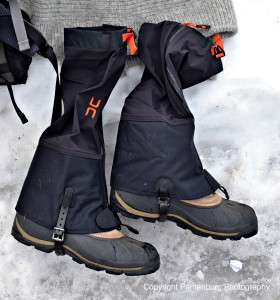
These gaiters are preferred – they have adjustable instep buckles, front zippers, and zip closed from top to bottom.
The instep strap should buckle: I have gaiters that tie, and they are a major pain to fool around with when your fingers are cold. And, if you’ve been hiking or showshoeing in sleet or slush, the tie will inevitably be frozen when you try to take them off, or need to adjust something on your boot. Buckles work better.
Zipper on the front: When zippers are on the back you have to do all sorts of contortions to get the danged things started. In the front, you can see the zipper as it is working.
Zip from the top down: Trying to start a zipper near the toe of your boot is a lot harder than starting it up around your knee. Also, if you need to unzip the gaiter to adjust a boot lace, you don’t have to take them completely down. This can be important in a sleet/snow storm.
Waterproof versus breathable: With Gortex, you get both. Waterproof, lightweight gaiters can be uncomfortable if the weather is hot and humid (think swamp trekking). Waterproof gaiters, in this instance, will be like wearing plastic bags on your legs.
Snakeproof gaiters need to breath, since snake weather is hot and humid. The beginning of snake weather also usually coincides with turkey season, so watch where you walk anyway. And don’t forget ticks! High gaiters may help keep them from latching on to exposed skin.
The gaiter top should be easy to tighten and loosen. One way to regulate heat is to open the top. Make this easy.
Gaiters should be part of your outdoor gear. Pick the right ones!
Please click here to check out and subscribe to the SurvivalCommonSense.com YouTube channel, and here to subscribe to our email update – thanks!

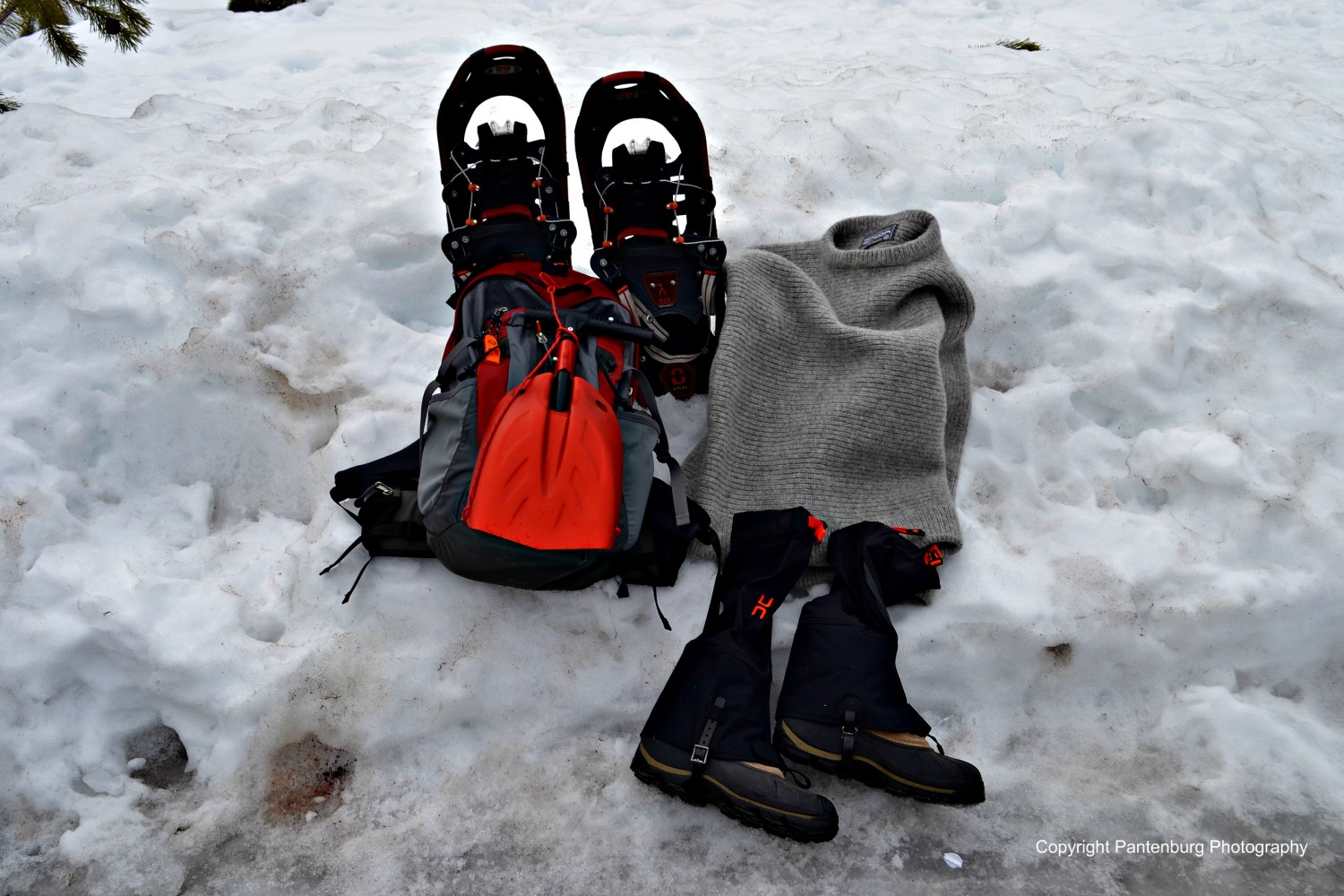

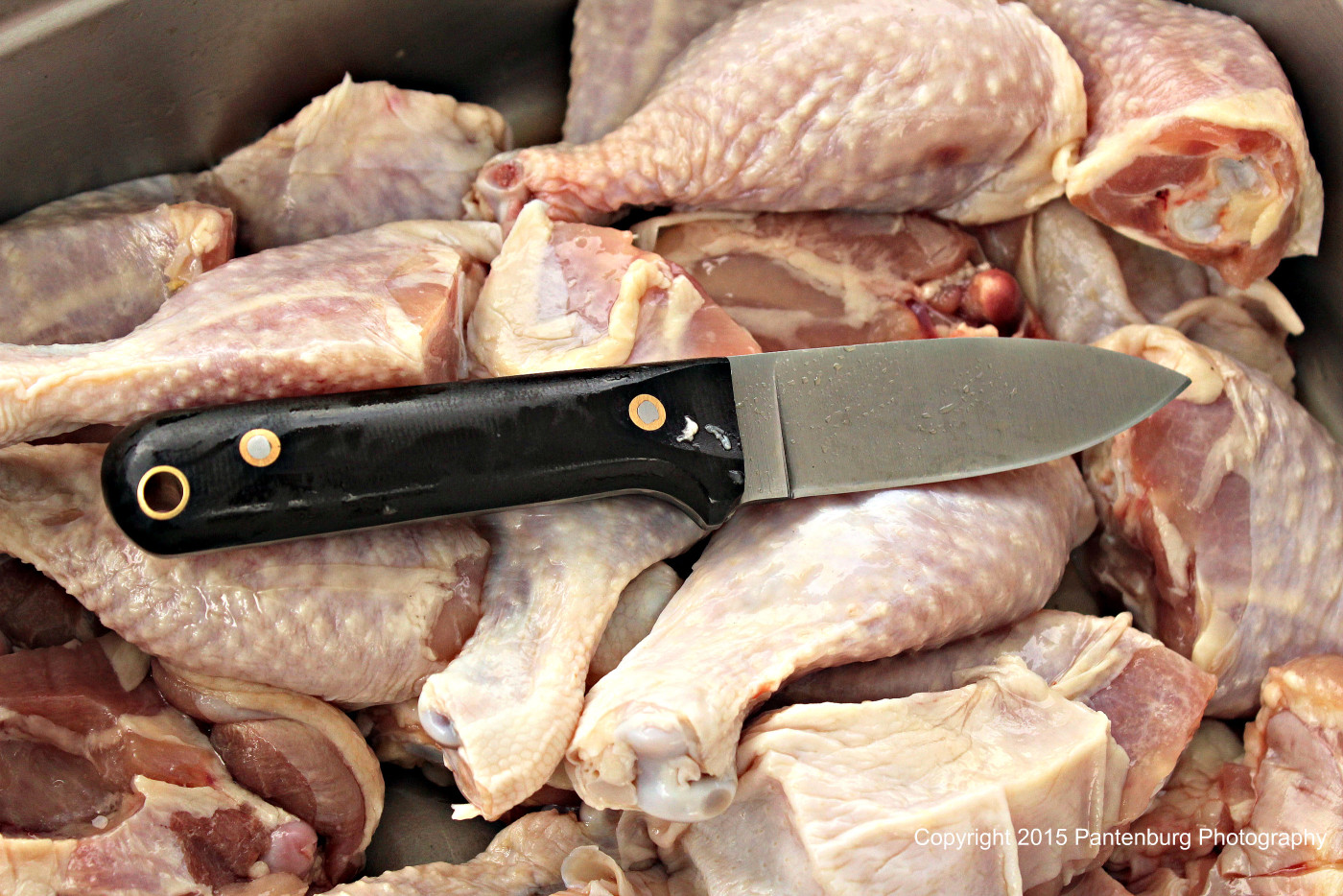


Leave a Reply